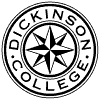 Jewish Fraternities
Jewish Fraternities Jewish Fraternities
Jewish FraternitiesOn May 14, 1931 the two Jewish fraternities at Dickinson College gained representation on the Student Senate. After many years they were beginning to earn the rights that other fraternities also enjoyed. 1 Their next obstacle was to obtain membership on the IFC at Dickinson. On March 2, 1933 these two organizations presented petitions to the IFC requesting membership. Both fraternities stressed three important facts. They both fell under the college's social rules and regulations. Secondly, they were recognized as national fraternities. Finally, they were members of the Student Senate of Dickinson College. 2 They felt as if their petitions would be accepted. Seven days later they were told disappointing news that the IFC denied their petitions. 3 Their reasons were vague but they explained that the IFC already contained enough representation of the schools fraternities. This was a similar reason to the one given in 1930. The IFC said "that the membership in present college fraternities, including two local clubs, includes too high a percentage of the male student body to justify the admission of any fraternity charters". 4 While it can not be proven, the religious issue was most likely the reason they were denied. The fraternities that were part of the IFC were protestant and they discriminated against the Jewish ones.
Students had already begun stressing their anger with the IFC's policy and this only served to strengthen this ill will. If the IFC was to be truly representative of the campus fraternities then it should include all of the fraternities not just the Protestant ones. Dickinson had been helped along for many years by the Methodist Church and had in response developed a heavily Protestant influence. Both Catholics, Jews, and other non-Protestant religious groups had been neglected and denied proper representation. In 1935 a preliminary report on the religious attitudes of Dickinson helped strengthen the idea that Protestants dominated the atmosphere. 5 The suggestions made in this report led to the creation of a Religious Council, which made efforts to stop the religious persecution on campus. By uniting the three main religious groups on campus the school hoped to promote religious unity. While Protestants still had the upper hand, the other religious groups began to gain power. The IFC's stance made it even more unpopular in many eyes. It acted as another catalyst in the political problems that existed on campus. The campus politics proved to be the biggest drain on the happiness of Dickinson students and faculty alike.
BACK TO IFC
Footnotes 1. Dickinsonian, May 14, 1931. Pg. 1. Dickinson College. Carlisle, PA.
2. Dickinsonian, March 2, 1933. Pg. 1. Dickinson College. Carlisle, PA.
3. Dickinsonian, March 9, 1933. Pg. 1. Dickinson College. Carlisle, PA.
4. Dickinsonian, November 20, 1930. Pg. 1. Dickinson College. Carlisle, PA.
5. Preliminary Report on the Problem of Religious Conservation at Dickinson College.
Dickinson College Religious Activities. 1935.
 |
|
Dickinson 1934 is a project of Prof. Osborne's History 204 Class, Fall Semester 2000. |